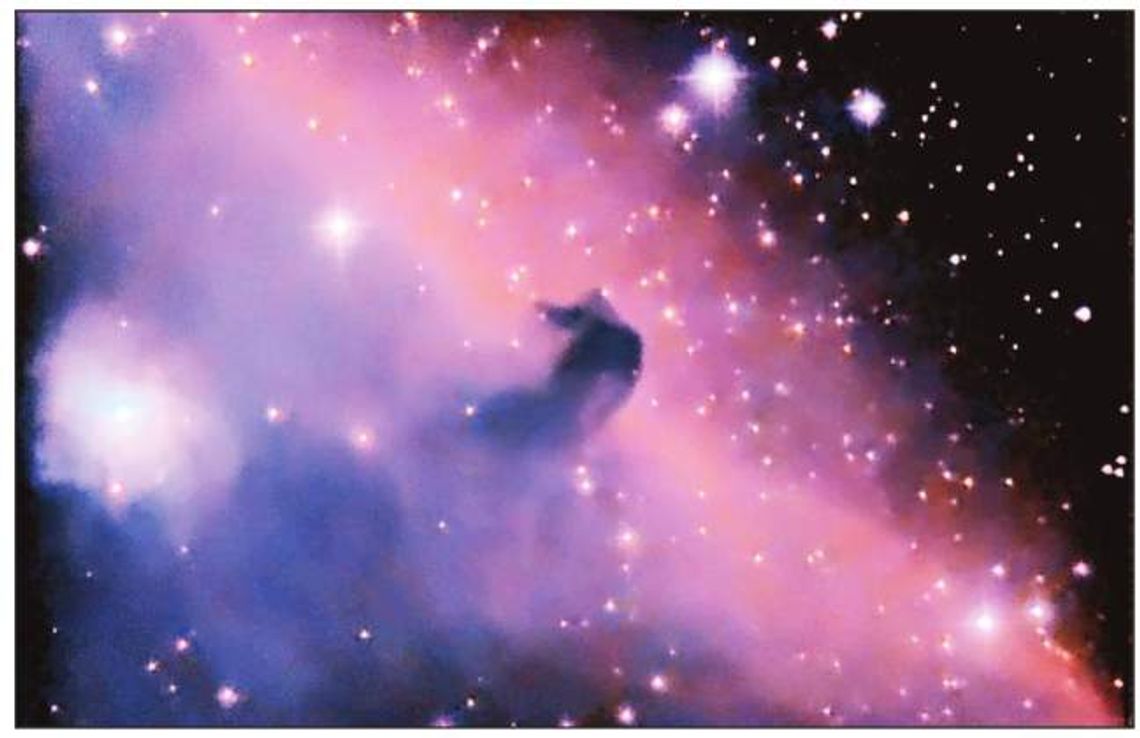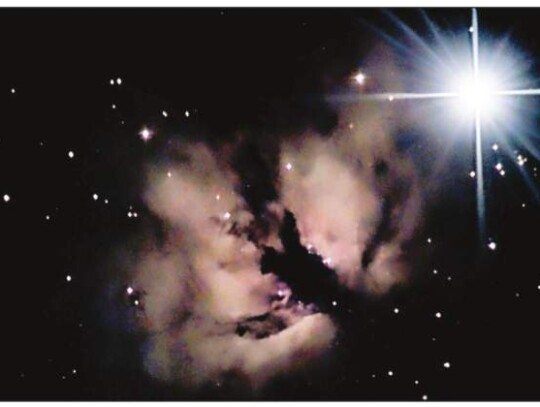If I were to write a book, here would be the ending paragraph.
I’m lying on the ground and looking skyward with no lights in any direction – in fact no humans anywhere I can hear or see. My only companion is the stary sky above. Everything, including myself, dissolves into the star-littered sky.
I’m floating. The trees and sounds have disappeared. I reach up and point to the stars, like Michelangelo and God touching fingers as in the fresco painting, The creation of Adam.
At that moment my body also has disappeared and I’m touching the eternal and infinite.
That’s what I would like to bring to each of my readers – that moment when you are aware of the eternal and infinite, no matter if you’re Christian, Hindu Buddhist, or just spiritual. Find a place where you can really get away and touch the face of the infinite.
To my Boerne Star readers … I talk to you of light years, distances and nebulae, but the larger picture is to imagine the unimaginable. Politics, squabbles with neighbors or other countries don’t matter. Nothing you watch on cable TV news programs matters whatsoever.
Light a match. It burns brightly, then is gone, like all living things in the material world. We live just an instant in time. Touch the eternal when you look up at the night sky.
One of my readers (yes I have a few) asked me to discuss the Bortle scale of your backyard sky quality. The Bortle scale is a way of measuring the brightness of the night sky for a particular location.
There are nine levels with Class 1 being the darkness of space and 9 being the center of a large city. My backyard has transitioned over the past year from 4.5 to 5, meaning my surroundings are becoming more light polluted. There is a cell phone app
There is a cell phone app called “Clear Outside” that will display your Bortle sky rating using your cell phone GPS. I’ve found it to be pretty accurate. Mine now shows Bortle 5.
In the city limits of Boerne, you’re likely to be 7 to 8. Main Street would clearly be 8 or 9. Note it’s accuracy depends on how often Clear Skies updates its map, and I don’t know that answer. What is more accurate is this desktop website which can be tailored to your exact location and bookmarked: https://www.cleardarksky. com/csk/prov/Texas_map. html?Mn=Solar%20Power.
It asks for a small donation to cover the cost of setting up your location. The added benefit is it being able forecast your cloud cover, etcetera, for up to four days in advance. It’s quite accurate in doing that since its computer ties into the Canadian version of our NOAA (National Oceanographic & Atmospheric Assn). Our National Weather Service gets its source data from NOAA.
In February, the new moon is on Tuesday, the first day of the month. So that entire week will be the time for viewing deep sky objects without the moon interfering.
For you lunar observers, the best time to view the moon is the week of Feb. 6-12. The full moon is Feb. 15-17. Then the last week of February the moon rises past midnight so it won’t bother you searching for faint objects in the night.
My photos to show you this month are extremely faint objects in Orion near the left most belt star. From left to right, the belt stars are named Alnitak, Alnilam and Mintaka.
Mintaka is a beautiful double star, so is Rigel, which is Orion’s right foot. Very near Alnitak are two objects which are very difficult to see visually in anything but the largest amateur telescopes, and then you need very dark skies. They do, however, respond well to digital imaging.
The first object is the best deep sky image I’ve taken to date. It’s called the Horsehead dark nebula and the blue and red gasses show up very well. The Horsehead is the dark appendage in the center. It’s made up of very dark soot like particles which block the background stars.
Here, you’re looking at the back of the horse, and his head is turning to the left to look back at you. It’s distance from us is 1,375 light years and it’s 3.5 light years across. This was an 83-minute image run on Dec. 26, 2021.
The object that is just out of the field of view of the Horsehead is the Flame nebula. Though it looks very bright in my processed image, it’s actually quite faint. The very bright nearby belt star, Alnitak, lights up the Flame.
Visually, you have to move Altinak out of the field to be able to see the very faint Flame. This was a 31-minute image run on Jan. 2.
Here’s a PSA: There will be a public star party on March 5, 2022, at the Bending Branch Winery just outside of Comfort. I “think” attendance will be capped at 100. Look for more information as Bending Branch updates its website: https:// www.bendingbranchwinery. com/Visit/Events.
Note if it’s cloudy or rain predicted that night, call the winery before heading out. Also please put red cellophane over any light that you bring from home.










Comment
Comments